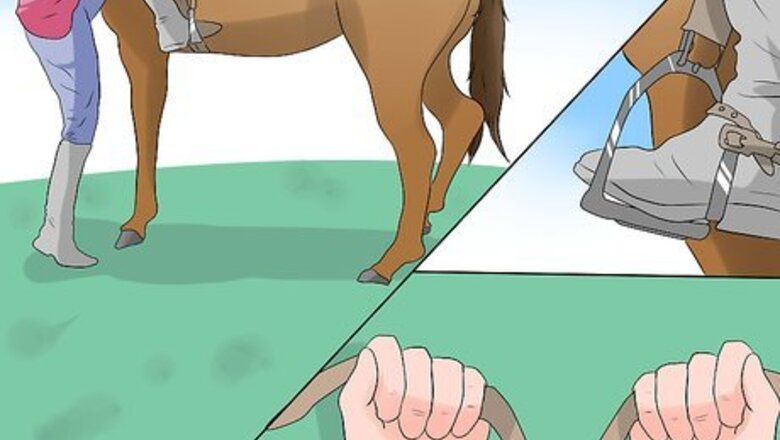
views
Holding the Reins
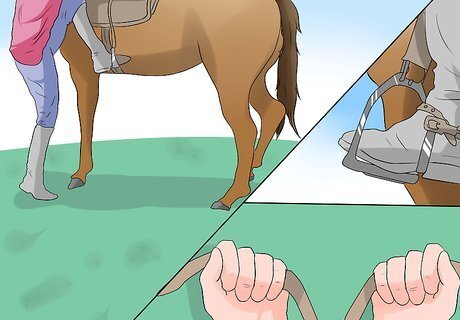
Mount your horse. When mounting, you will often mount on the left side, because of the fact that most horses are used to being approached on this side. Pick up the reins with your left hand, put your left foot in the stirrup closest to you and then push yourself over the saddle (while still holding the reins). After mounting, your feet should already be in the stirrups.
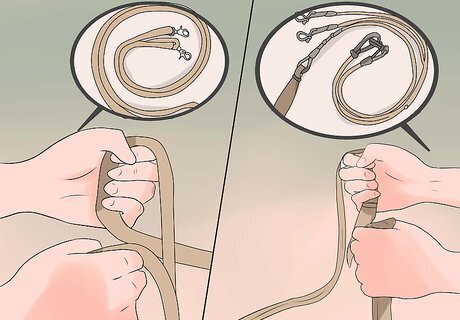
Check the type of reins. In Western riding, riders usually use split reins, with one for each hand or they hold them with one hand. But in English riding, the reins are typically connected, forming a loop. The instructions below apply to both types except where noted. Loop reins are the most common reins, except in Western riding, and are also used in dressage, jumping, polo, and horse racing.
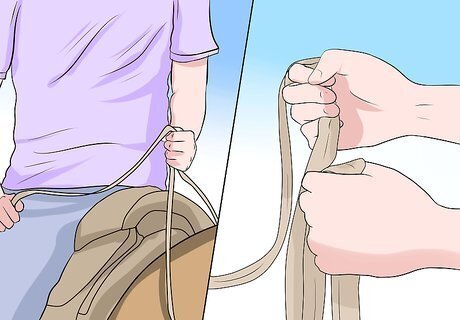
Hold opposite sides of the reins. Start by holding one rein in each hand, or opposite sides of a loop rein. When you are a more experienced rider, you may learn to hold both split reins in one hand. For now, using both hands will give you more control over the horse. Loop reins are always held with both hands, regardless of experience.

Wrap the rein around your first three fingers. Hold your palm flat. Loop the rein around your pointer, middle, and ring fingers. It should not wrap around your thumb or pinky. Repeat this for your other hand as well.
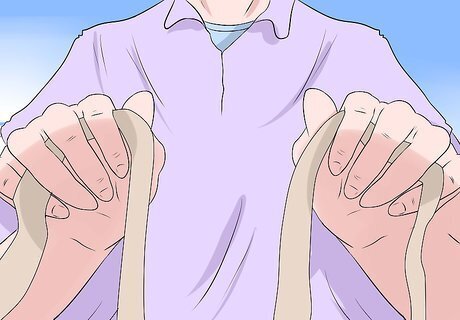
Close your hands in a loose fist. Hold the reins loosely, as though you were holding an ice cream cone. Turn your hands so your thumbs point up and slightly toward each other.
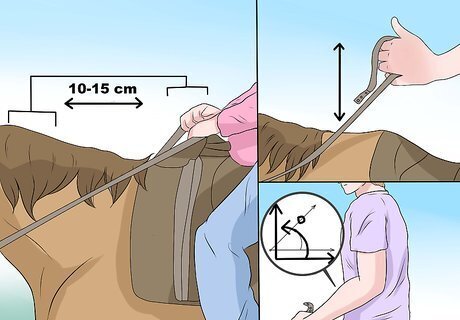
Position your hands. Your hands should be approximately 10–15 centimeter (3.9–5.9 in) apart, and never further apart than the width of your horse's neck. Your hands have to be above your horses withers. Keep your hands relaxed and a little above the saddle, in front of the saddle pad. Your elbows have to be in an angle around 90°.

Hold the reins at the right tension. You want just enough tension to maintain control, without restricting the horse's movements unnecessarily. It's better to hold them too loose than too tight, in order to avoid causing pain. Beginners should always use reins attached to a gentle bit, such as a snaffle bit with D rings. Horses with a harsher bit or sensitive muzzles may react with surprise and pain if the reins are tugged too hard.
Advanced Uses
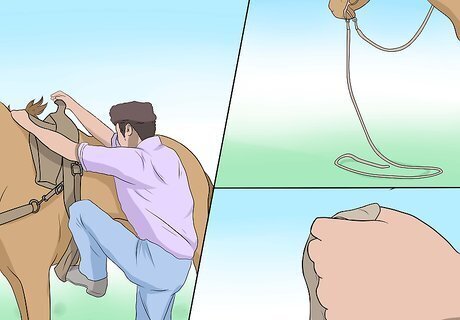
Train your horse to obey ground-tying. A cowboy's horse is often trained to stand still when the cowboy dismounts and puts one of the reins on the ground. This is called being "ground-tied."

Adapt your style for ranch work. Experienced cowboys develop their own rapport with their horse, and may alter the reins or other elements of the tack. Generally, a cowboy performing ranch work will hold the reins in the left hand and allow them to hang somewhat loosely. This leaves the right hand free for roping cows or other work performed from horseback.
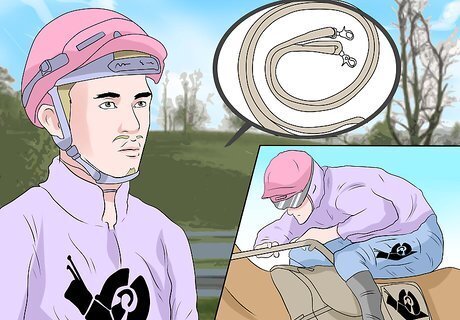
Use reins in horse racing. Jockeys use the long, looped rein typical in English riding, with rubber grips for increased hold. In a horse race, the jockey pulls low and tight, so that the horse tucks his chin to his chest, in order to collect the horses gait and slow its gallop. This gives both horse and rider balance and allows the jockey a bit of leverage and control. Rearing is generally an evasion and can be dangerous. Horses rely on balance, and rearing is probably the most unbalanced they are in their day-to-day lives. Usually, you do not see rearing horses. When they do, it's a behavior problem from bad training. But if you want to teach your horse rearing work with a trainer who specializes in that.










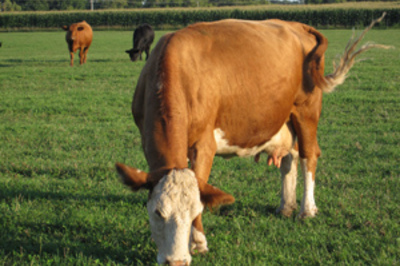






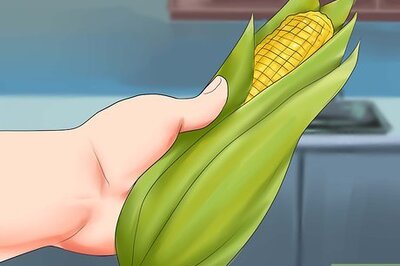


Comments
0 comment